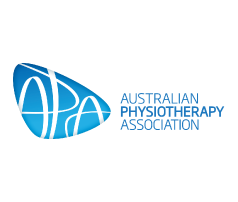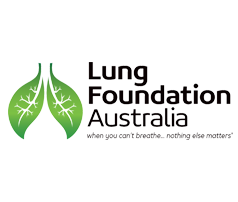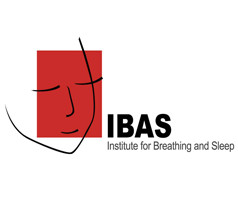Active Cycle of Breathing Technique
Cecins NM, Jenkins SC, Pengelley J, Ryan G.(1999) The Active Cycle of Breathing Techniques – to Tip or Not to Tip? Resp Med 93; 660-665.
Lapin CD. (2002) Airway physiology, autogenic drainage and active cycle of breathing. Respiratory Care 47:778-85
Lewis et al. (2012) The Active Cycle of Breathing Technique: A systematic review and meta-analysis. Resp Med 106, 155-172
Menkes HA, Traystmas RJ.(1997) Collateral Ventilation. Am Rev Respir Dis 116;287-309
McKoy et al.(2012) Active cycle of breathing for cystic fibrosis. Cochrane Database Systematic Review Dec 12;12:CD007862
Patterson et al. (2005) Airway clearance in bronchiectasis: A randomized crossover trial of Active Cycle of Breathing Techniques versus Acapella. Respiration 72:239-242
Pryor JA, Prasad SA.(2008) Physiotherapy for Respiratory and Cardiac Problems (4th Ed) Churchill Livingston, Edinburgh pp 137-141
Pryor JA, Webber BA, Hodson ME, Batten JC. (1979)Evaluation of the Forced Expiration Technique as an Adjunct to Postural Drainage in Treatment of Cystic Fibrosis. Brit Med J 2; 417 418.
Snijders D et al (2015) Mucociliary clearance techniques for treating non-cystic fibrosis bronchiectasis: Is there evidence? Int J Immunopathol Pharmacol. Jun;28(2):150-9. doi: 10.1177/0394632015584724. Epub 2015 Jun 15
Thompson et al.(2002) Randomised crossover study of the Flutter device and the active cycle of breathing technique in non-cystic fibrosis bronchiectasis. Thorax 57:446-448
Tucker B1, Jenkins S, Cheong D, Robinson P.(1999) Effect of unilateral breathing exercises on regional lung ventilation. Nucl Med Commun. Sep;20(9):815-21
Van der Schans CP. (1997)Forced expiratory manoeuvres to increase transport of bronchial mucous: a mechanistic approach. Monaldi Archives of Chest Disease 52:367-370.
Wilson GE, Baldwin AL, Walshaw MJ. 1995 A Comparison of Traditional Chest Physiotherapy with the Active Cycle of Breathing in Patients with Chronic Suppurative Lung Disease. Eur Resp J 8 (Suppl 19); 171S.
Airway Clearance
Blue Booklet. 2009 Physiotherapy for people with cystic fibrosis from infant to adult. European Cystic Fibrosis Society Website. International Physiotherapy Group .
Holland AE, Button BM. (2006)Is there a role for airway clearance techniques in chronic obstructive pulmonary disease? Review Series: physiotherapy techniques for respiratory disease. Chronic Respiratory Disease; 3:83-91.
Jones, A., & Rowe, B. H. (2000). Issues in pulmonary nursing. Bronchopulmonary hygiene physical therapy in bronchiectasis and chronic obstructive pulmonary disease: a systematic review. Heart & Lung, 29(2), 125-135.
Lee AL, Burge A, Holland AE. (2013) Airway clearance techniques for bronchiectasis. Cochrane Database Syst Rev. May 31;5:CD008351.
Lee A, Button B, Denehy L.(2008) Current Australian and NZ physiotherapy practice in the management of patients with chronic bronchiectasis and COPD. NZ Journal of Physiotherapy;36(2):49-58
Pryor JA, Prasad SA. (2008) Physiotherapy Techniques in: Pryor JA, Prasad SA (Eds) Physiotherapy for Respiratory and Cardiac Problems (4th edn) Churchill Livingstone, Edinburgh pp 134 – 217.
Rea H et al, (2010).The clinical utility of long-term humidification therapy in chronic airway disease. Respiratory Medicine 104,4: 525–533
Williams R et al.(1996) Relationship between the humidity and temperature of inspired gas and the function of the airway mucosa. Crit Care Med.Vol 24,11:1920-26
Autogenic Drainage
App EM, Kieselmann R, Reinhardt D, Lindemann H, Dasgupta B, King M, Brand P. (1998) Sputum rheology changes in cystic fibrosis lung disease following two different types of physiotherapy: flutter vs autogenic drainage. Chest. Jul; 114(1):171-7.
Cortina-Herrero B, Vilaro J, Marti D, Torres A, San Miguel-Pagola M, Alcaraz V, Polverino E (2016) Short term effects of slow expiratory airway clearance techniques in patients with bronchiectasis. A randomised crossover trial. Physiotherapy; 102(4): 357-364.
Dab I, Alexander F. (1979)The Mechanism of Autogenic Drainage Studied with Flow-Volume Curves. Monogr, Paediatr 10; 50-53,
Davidson AGF, McIlwaine PM, Wong LTK, Nakielna EM, Pirie GE. (1988)Physiotherapy in Cystic Fibrosis, A Comparative Trial of Positive Expiratory Pressure, Autogenic Drainage and Conventional Percussion and Drainage Techniques. Paediatr Pulmonol, suppl. 132.
Fink BJ. (2007)Forced Expiration Technique, Directed cough and Autogenic Drainage. Respir Care;52;9: 1210-1223.
Giles, DR, Wagener, JS, Accurso FJ, Butler-Simon N. (1995) Short term effects of Postural Drainage versus Autogenic Drainage on oxygen saturation and sputum recovery in patients with cystic fibrosis. Chest; 108:952-954.
Lapin CD.(2002) Airway physiology, Autogenic Drainage and Active Cycle of Breathing. Respir Care ;47(7):778-785.
McIlwaine M, Wong LT, Chilvers M, Davidson GF. (2010) Long term comparative trial of two different chest physiotherapy techniques: postural drainage with percussion and autogenic drainage, in the treatment of cystic fibrosis. Pediatr Pulmomol Nov; 45 (11): 1064-9.
McIlwaine PM, Davidson AGF, Wong LTK, Pirie G (1991). The effect of chest physiotherapy by Postural Drainage and Autogenic Drainage on oxygen saturation in Cystic Fibrosis. Pediatr Pulmonol Suppl 6, 291.
Miller S, Hall DO, Clayton CB (1995) Chest Physiotherapy in Cystic Fibrosis: A comparative Study of Autogenic Drainage and the Active Cycle of Breathing Techniques with Postural Drainage. Thorax 50; 165-169.
Pfleger A, Theissl B,Oberwalder B, Zach MS (1992). “Self administered chest physiotherapy in cystic fibrosis: a comparative study of high pressure PEP and autogenic drainage. Lung 170(6) 323-330.
Savci S, Ince DI, Arikan H (2000). A comparison of autogenic drainage and the active cycle of breathing techniques in patients with chronic obstructive pulmonary diseases. J Cardiopulm Rehabil 20(1):37-43
Spence S. Anderson B, Hardy K (1990). Use of biofeedback to teach autogenic drainage. Pediatr Pulmonol Suppl 5: 332A.
Van Ginderdeuren F, Malfroot A, Verdonck J, et al (2003). Influence of Assisted Autogenic Drainage (AAD) and AAD combined with bouncing on gastro-oesophageal reflux (GOR) in infants under the age of 5 months. J Cystic Fibrosis 2 (suppl1) : A251.
ELTGOL
Gerard Muñoz, Javier de Gracia, Maria Buxó, Antonio Alvarez and Montserrat Vendrell (2018) Long-term benefits of airway clearance in bronchiectasis: a randomised placebo-controlled trial. Eur Respir J 2018; 51: 1701926. – April 01
Lanza FC, Alves CS, dos Santos RL, de Camargo AA, Dal Corso S (2015) Expiratory reserve volume during slow expiration with glottis opened in infralateral decubitus position (ELTGOL) in chronic pulmonary disease: technique description and reproducibility. Respir Care; 60(3): 406-411.
Martins JA, de Andrade A, britto RR, Lara R, Parreira VF (2012)Effect of slow expiration with glottis opened in lateral posture (ELTGOL) on mucus clearnace in stable patients with chronic bronchitis. Respir Care; 57(3): 420-426.
Gravity Assisted Drainage
Button BM (2010). The Effects of Body Positioning on Ventilation: Implications for Airway Clearance Therapy. Pediatr Pulmonol Suppl; 33: S13.2: 176-178.
Button BM, Heine RG, Catto-Smith AG, Phelan PD, Olinsky A, Ditchfield MR, Story I (1999). Chest physiotherapy in infants with cystic fibrosis: to tip or not to tip? Resp Med 93:660-665
Cecins N et al (1999). The active cycle of breathing techniques – to tip or not to tip? Resp Med 93;660-665
Craig B, Becklake M et al (1971). “Closing volume” and its relationship to gas exchange in seated and supine positions. J Appl Physiol 31 (5):717-721.
Eaton T, Young P, Zeng I, Kolbe J (2007). A randomised evaluation of the acute efficacy, acceptability and tolerability of flutter and active cycle of breathing with and without postural drainage in non-cystic fibrosis bronchiectasis. Chronic Respir Dis 4:23-40
Elkins MR, Alison JA, Bye PT (2005). Effect of body position on maximal expiratory pressure and flow in adults with CF. Pediatr Pulmonol 40(5):385-91.
Frownfelter D and Dean E (2006) Cardiovascular and Pulmonary Physical Therapy; evidence and practice; Chapter 19: Body positioning. Fourth edition:307-324.
Kaneko K, Bates DV et al (1966) Regional distribution of ventilation and perfusion as a function of body position. J Appl Physiol 21(3):767-777.
Krieg S et al (2007). Position affects distribution of ventilation in the lungs of older people: an experimental study. Aust J Physiother 53:179-184.
Lannefors L and Wollmer P. Mucus clearance with three chest physiotherapy regimes in CF: a comparison between postural drainage, PEP and physical exercise. Eur Respir J 1992;5:748-753.
Lannefors L, Wollmer P (1992) Mucus clearance with three chest physiotherapy regimes in cystic fibrosis: a comparison between postural drainage, PEP and physical exercise. Eur Respir J 5(6):748-753
Mazzocco M, Owens RO, Gonzales-Camid F, Warda M, Kirilloff L, Rogers R (1985). Chest percussion and postural drainage in patients with bronchiectasis. Chest; 88(3): 360-363.
Sutton PP, Gemmell HG, Innes N, Davidson J, Smith FW. Legge JS (1988)Use of nebulized saline and nebulized terbutaline as an adjunct to chest physiotherapy. Thorax; 43: 57-60.
Zack MB, Pontoppidan H, Kazemi H (1974) The effect of lateral positions on gas exchange in pulmonary disease. Am RevRespirDis 110:49-55
Manual Techniques
Bauer ML,McDougal J, Schoumacher RA (1994). Comparison of manual and mechanical chest percussion in hospitalized patients with cystic fibrosis. J Pediatr. Feb;124(2):250-4
Dallimore K, Jenkins S and Tucker B (1998).Respiratory and cardiovascular responses to manual chest percussion in normal subjects. Aust J physiother 44: 4;267-274
Mazzocco MC, Owens GR, Kirilloff LH, Rogers RM (1985).Chest percussion and postural drainage in patients with bronchiectasis. Chest Sep;88(3):360-3.
Pryor JA, Parker RA, Webber BA (1981). A Comparison of Mechanical and Manual Percussion as Adjuncts to Postural Drainage in the Treatment of Cystic Fibrosis in Adolescents and Adults. Physiotherapy 67; 140 141.
Webber W, Parker R, Hofmeyr J, Hodson M (1985) Evaluation of self-percussion during postural drainage using the forced expiration technique. Physiotherapy Theory and Practice. Vol. 1: pp 42-45








